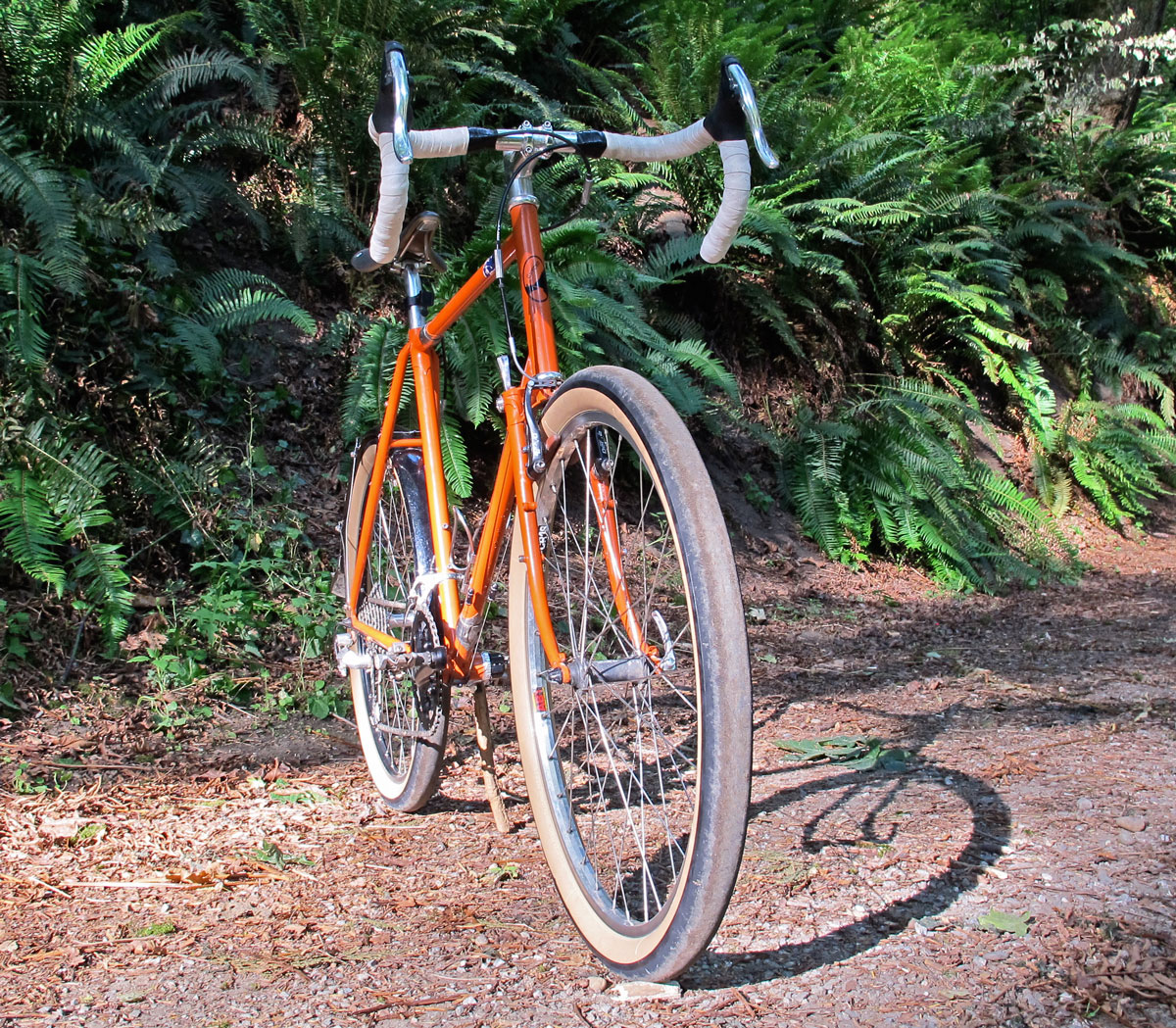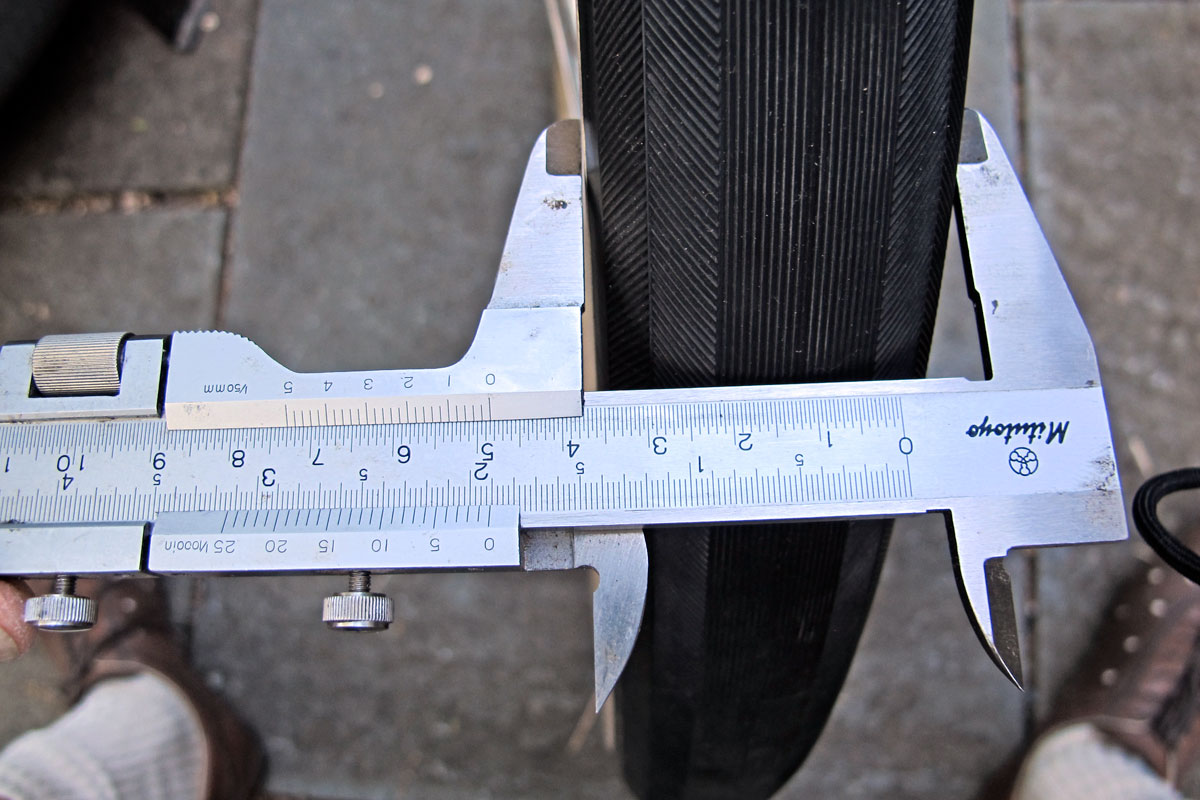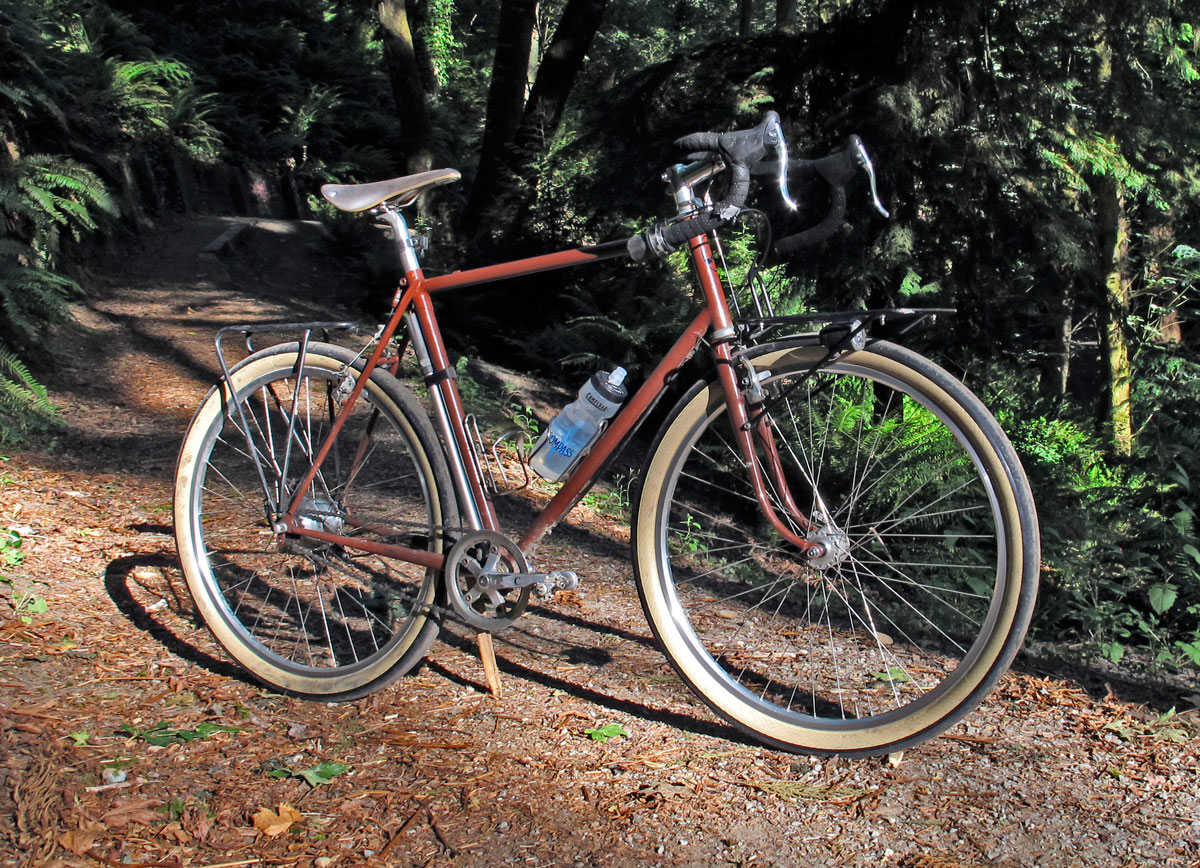Compass Tire Prototypes: Really Big Tires!

Our very first Enduro Allroad prototype tires started out as knobbies with supple casings – then we had the knobs shaved off by Peter Weigle. We wanted to test the concept of a very wide, supple tire before committing to expensive tire molds. We were happy to report that the tires performed even better than expected! So we decided to proceed.
Last week, the project reached another milestone: We received prototypes made from the actual production molds. So while these are made as a very small batch and required even more hand-work than the final tires, they are basically the tires that you will be able to buy and ride in a few months.

The first samples we received were the 26″ x 54 mm tire. (For some reason the tire mold was changed to 58 mm after we approved the text!) This batch uses the “standard” (supple) casing. When we put one of the tires on the scale, it weighed 454 grams – quite light for a tire this wide.

Mounted on a 23 mm-wide rim, the tire measured a little over 49 mm. In the two days since, the tire has “grown” by 2 mm. The “Extralight” tires tend to stretch even more, so when used with wider rims, they’ll probably be close to the anticipated 54 mm.

Then we received a second box… This time, it contained the 650B x 48 mm tires – made with the extra-supple “Extralight” casing. Out came the scale again, and we measured 413 grams – remarkable for such a big, puffy tire.

Mounted on a 23 mm-wide rim, this tire measured just over 48 mm right away, and like the 26″ tire, it has grown 2 mm in the days since we mounted it. That means that this tire is slightly wider than planned. Its width is just a millimeter or two narrower than the 26″ tire.

Of course, measurements don’t tell us much about the tires: What we really want to know is how they ride. Fortunately, our friend Alex Wetmore has two bikes with similar front-end geometries (both have 40 mm trail). One is his “normal” bike, set up for 650B tires (above). The other is his “Travel Gifford”, which runs 26″ tires (photo at the top of the post). These two bikes are perfect candidates to compare the new tires.
Aired up to about 28 psi, I took to the streets and trails in Seattle’s Ravenna neighborhood. On the broken pavement of the residential streets, I wondered why we don’t ride these tires all the time. Even the 42 mm Babyshoe Pass tires of my Urban Bike, which I had ridden to Alex’ house, were surpassed for comfort and secure handling by these even bigger tires.
Riding the two bikes back-to-back, the differences due to the different wheel sizes were very noticeable. The 26″ bike felt very nimble and agile. It was easy to pick a line, but the handlebars required a light touch to maintain that line. The 650B bike, with its larger wheels and greater rotational inertia, felt much more stable. It required more input to change its line, and catching a slide on gravel took a hair longer than it had on the 26″ bike. The 650B bike also had an (empty) front rack, which further stabilizes the steering. While the steering of the unloaded 26″ bike was a tad light, adding a rack and handlebar bag would make it more stable. Both bikes handled fine, they were just at the opposite ends of what I consider “fine handling”.
The real revelation came on gravel. Both bikes felt like good road bikes. The uphill traction was amazing. Sprinting out of the saddle was easy. Only the cornering speeds were lower than on pavement – when the gravel starts sliding under your wheels, no tire can maintain traction. These tires really are a revelation – they have changed how I think a bike can perform on gravel.
Production of the new tires is scheduled, and we hope to have them in stock by July or August. Click here for more information about Compass’ existing tire program.


